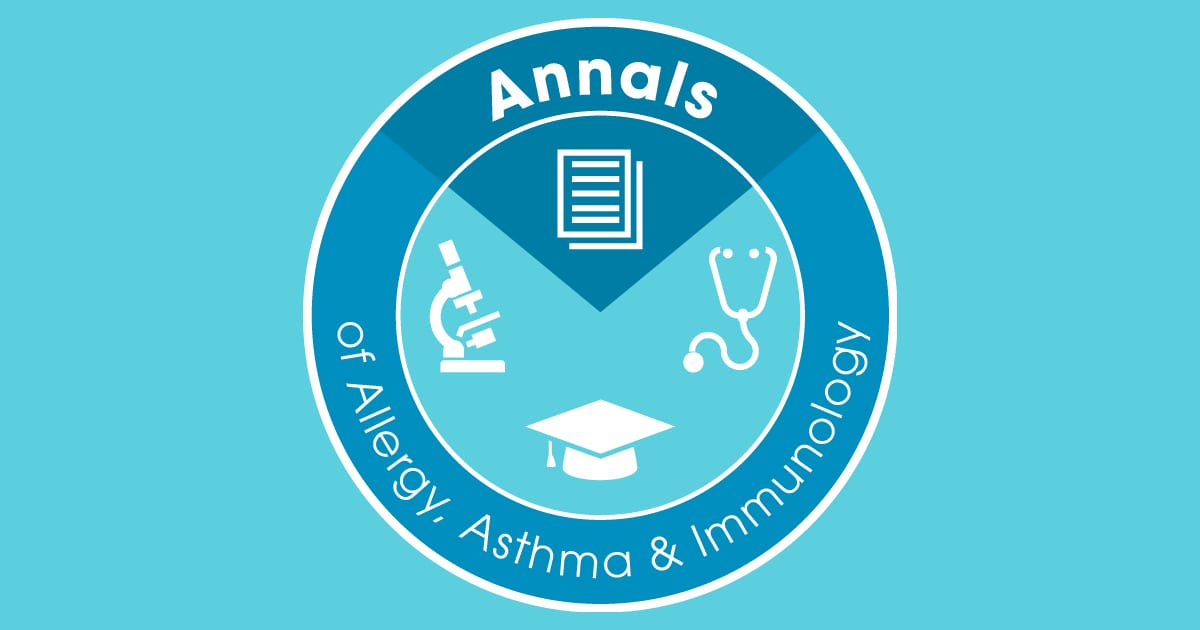As the year rolls into summer, the current issue of Annals of Allergy, Asthma and Immunology touches on various issues that affect our patients with allergic and immunologic disorders. The June 2023 issue focuses on two main areas: anaphylaxis and immune deficiency.
The two reviews (S. Shahzad Mustafa’s “Steroid-induced secondary immunodeficiency,” and “Secondary immunodeficiencies and infectious considerations of biologic immunomodulatory therapies” by Laura Cannon and colleagues), along with an accompanying editorial by Jay Lieberman, highlight important considerations when prescribing immunomodulatory therapy. Secondary infections due to immunomodulatory treatments will vary and depend on the pathway that is being inhibited (see Table 1 in the Cannon manuscript for which organisms patients should be screened for).
As biologic immunomodulatory therapies become more common, this emerging field will become a larger part of A/I practice. We as allergist-immunologists are the experts in the immunologic pathways and can help other specialists manage untoward effects of blocking these various pathways. The Marginal Zone takes a more humorous view of the field with an immunologic crossword puzzle (which may be a quiz or questions for the next FIT Bowl). In the theme of immunodeficiency, Jamie A. Rosenthal and colleagues found that patients with Common Variable Immunodeficiency (CVID) have impaired response to COVID vaccination, indicating additional protections are needed for these patients.
The other area of focus for this issue is anaphylaxis. Joan Bartra and colleagues discuss key risk factors for severe reactions to food including exercise, lack of sleep and alcohol, and provide some potential mechanisms for these risk factors. Elaine Y. L. Au and colleagues present a large cohort of patients with perioperative anaphylaxis, with neuromuscular agents being the most common inciting agents. They also review various diagnostic techniques including skin tests, specific IgE and basophil activation testing with sensitivity and specificity that depend on the inciting agents. In the treatment of anaphylaxis, Matthew Greenhawt and colleagues present a thought-provoking perspective that epinephrine use does not necessarily need to require a trip to the emergency department (ED). They cite data showing vastly reduced costs without an ED visit, and the fact that during the peak of COVID pandemic, ED visits after uncomplicated epinephrine use were not recommended and there was no increase in serious adverse events. This change in policy would provide a huge cost savings and possibly convince patients to use life-saving epinephrine sooner.
Finally, an updated yardstick for the treatment of atopic dermatitis is provided, which updates the use of newer biologics that are revolutionizing the treatment of patients with moderate-severe atopic dermatitis. This guidance provides a useful resource on how and when to step up therapy when patients need systemic therapy for treatment of atopic dermatitis.
Just a reminder that nominations for the 2023 ACAAI Annals Fellow-in-Training (FIT) Awards are currently being accepted. These cash awards (up to $2,500!) are for a FIT who publishes a paper in Annals (in print) between July 1, 2022 and June 30, 2023. Read the full award instructions. Nominations should be sent by email to Annals@ACAAI.org and must be received by August 15, 2023. And, as always, if you have comments on any articles published in Annals, please consider sending us a correspondence (email us at Annals@ACAAI.org). We are always excited to hear how Annals has helped you improve the lives of your patients!
Jonathan Spergel, MD, PHD, FACAAI
Deputy Editor


